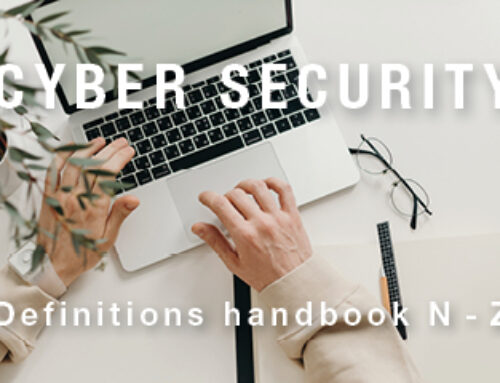Zero trust security, what is this concept, and how does it work, and how does it apply to my Australian business?
In this ever-evolving digital age, now more than ever, it is paramount that you have the best possible security for your Australian business. With big data being the next gold rush, business owners must protect their information like a dragon hoarding its treasure; fierce and untrusting – which is where zero trust security comes in. But what is it? How does it work? And how can you apply it to your Australian business?
In this article, we’ll outline everything you need to know about zero trust security so that you can decide if it’s the best move for you.
What is zero trust security?
So, just what is zero trust security? As the name suggests, zero trust security is an IT security model that relies on strict, air-tight identification verification from every single person and device that is trying to access resources on a private network, regardless of whether or not they are sitting inside the network’s perimeter.
Simply put: while traditional IT network security will trust anything inside the network, a zero trust architecture trusts absolutely no one! Not so dissimilar to what we teach our children growing up: “don’t talk to strangers!”.
Traditional IT network security is typically based on the ‘castle and moat’ concept. This type of security makes it incredibly difficult to obtain access from outside of a network, however, anyone inside the network is automatically trusted by default. If the story of Helen of Troy has taught us anything, it’s that the inside of your castle can easily be compromised – and therein lies the issue with this dated approach to network security: once an attacker gains access, they have free reign over all of the valuable data inside.
The vulnerabilities of the castle and moat security systems are made much worse by the simple fact that most businesses no longer have their data stored in just one place. Today, much of our information tends to be spread across multiple cloud vendors which can make it even harder to have one single security protocol for an entire network.
Again, with zero trust security, it means that no one is trusted by default and thus verification is required from absolutely everyone who wishes to gain access to any resources on the network. This additional layer of security has proven to prevent data breaches time and time again.
One particular study has demonstrated that the average cost of a single data breach can amount to over $3-million. Bearing that figure in mind, it comes as no surprise that many businesses and organisations are now hungry to adopt a zero trust security approach – and so should you.
How does zero trust security work?
How does zero trust security work? The main concept of zero trust security is eloquently simple: assume that everything trying to gain access is hostile by default. It might seem a little militant or perhaps over the top, though at least it leaves zero room for error.
This is a major departure from the standard network security model that has been in use since the 1990s. These dated methods rely on approved IP addresses, ports, and protocols to establish access and validate what can be trusted and this can even include anybody using a remote access VPN (virtual private network).
On the other hand, with a zero trust approach, your security will be treating all traffic as hostile, even if it is already inside the network perimeter. This is particularly valuable now given how readily available VPN’s are, allowing people to mask their location and use mirror IP’s to act as though they are somewhere else entirely (thus making it easy for hostiles to position themselves within your network perimeter).
With fingerprint or identify verification policies in place, the result is far stronger security that travels with the workload wherever it is communicating, whether it be in a public cloud, on-premises, or in a hybrid environment.
Zero trust securely connects any users, devices, and applications by utilising business policies over any network related to your business allowing for a safe digital transformation.
How does zero trust security apply to my Australian business?
Now that we have a better understanding of what zero trust security is and how it works, how can it apply to your Australian business? What benefits can it bring?
-
Improved visibility: A zero trust strategy allows you to discover and classify all of the devices that are active on your network and not just those that are operational or have endpoint agents installed. This increases visibility which is essential to managing and controlling everything within your network.
-
Reduced capital expenditure and operating expenses: Generally speaking, with improved security outcomes, often comes greater complexity and expense. However, with a zero trust approach allows you to consolidate multiple security controls across your network thus reducing CAPEX and OPEX.
-
Reduced scope and cost of compliance: Zero trust networks are segmented which reduces the overall scope of regulations and compliance audits which in turn makes auditing less complicated and reduces the overall cost of compliance required.
-
Supports cohesive IT issue resolutions: The inherent transparency and visibility provided by zero trust networks allow IT specialists to work more efficiently to resolve any security issues thus allowing you to recover quickly and reduce the time and costs associated with any network downtime.
- Limitless digital business transformation: As zero trust networks are segmented in nature, any new services introduced can be supported with the necessary privileges and protection.
Conclusion
As with any transformation or great change within an organisation, it should be approached in phases so as to reduce the amount of disruption to your business. Switching to a zero trust security approach is viable, but something that requires great thought and consideration. As such, working with a reputable provider such as Computer Troubleshooters can be of great benefit. Allow us to simplify the transition for you and ensure that your business’s vital information and data are entirely secure.
For more information on how it works and how it can benefit your Australian business, please feel free to contact us today.






